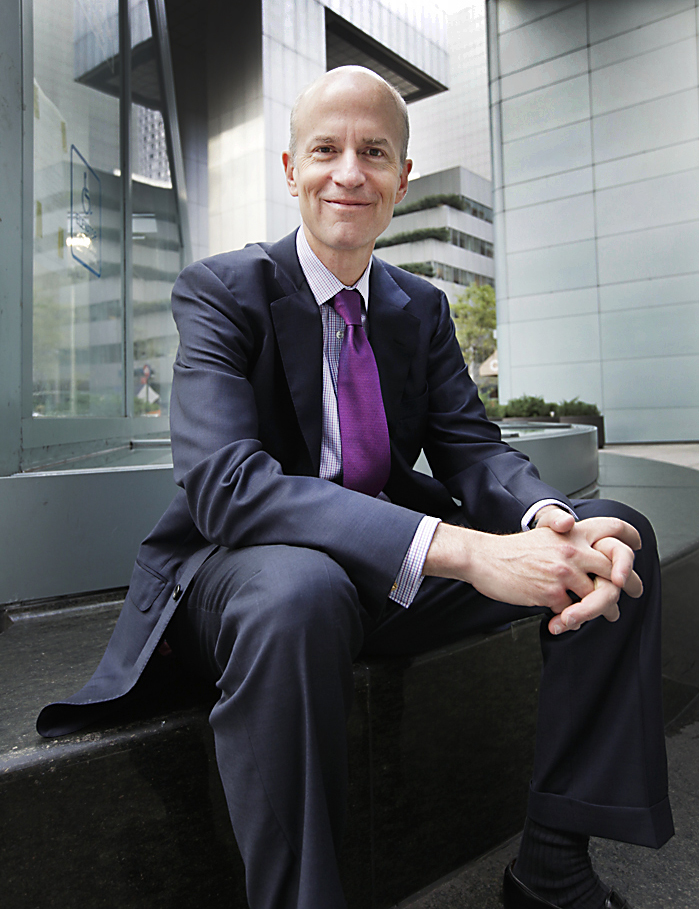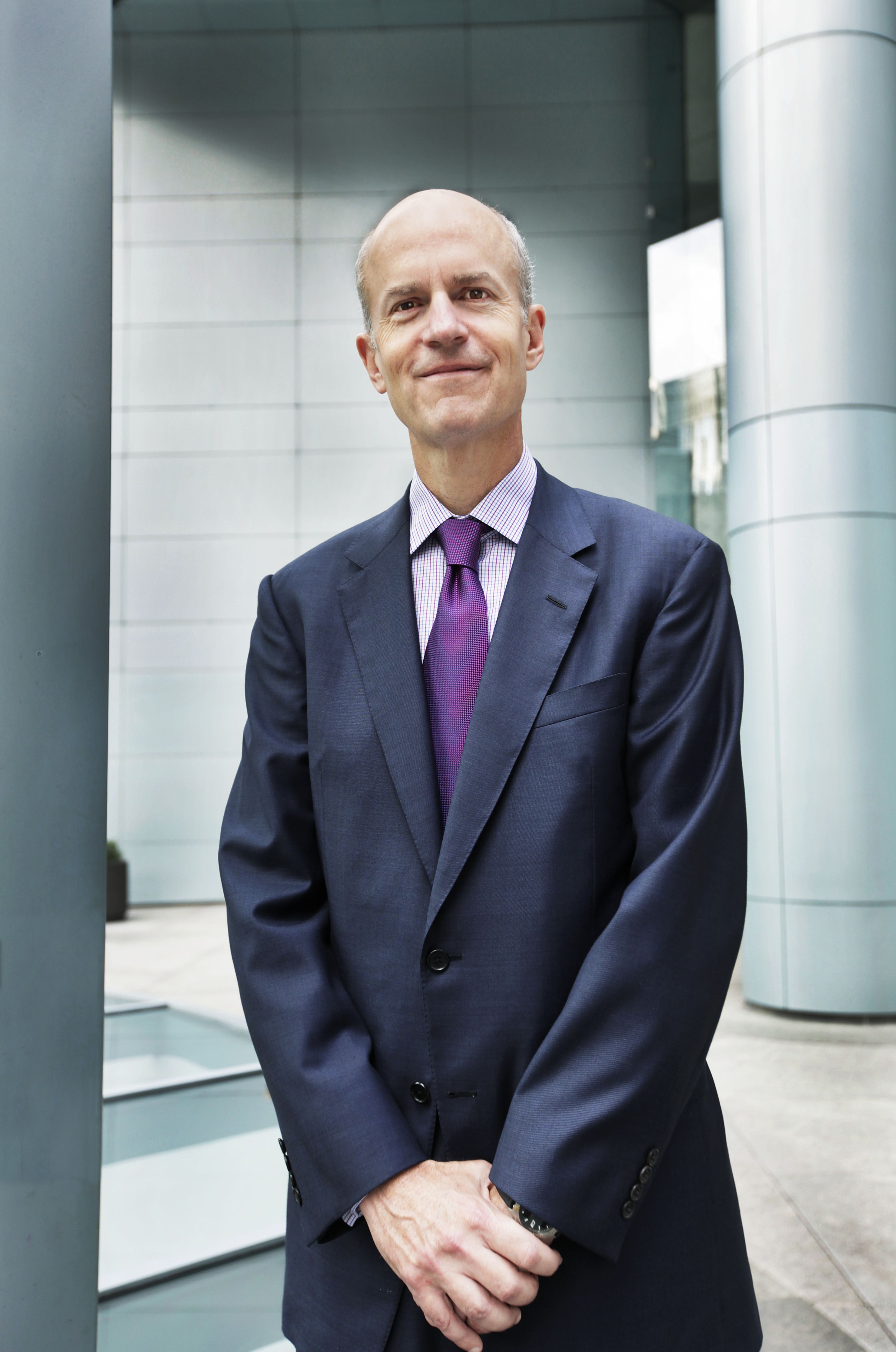 Described by some as the “bluest of blue chip” REITs in the United States, Boston Properties, Inc.’s (NYSE: BXP) portfolio of iconic, top-tier office assets is overseen today by CEO Owen Thomas.
Described by some as the “bluest of blue chip” REITs in the United States, Boston Properties, Inc.’s (NYSE: BXP) portfolio of iconic, top-tier office assets is overseen today by CEO Owen Thomas.
As an outsider, Thomas, who has held the top post since succeeding co-founder Mort Zuckerman in April 2013, brought a wealth of real estate and business experience into the company. He previously served as chairman of Lehman Brothers Holdings Inc., the successor company to Lehman Brothers, and remains a director of the company. At Lehman, Thomas shepherded through the sale of Archstone Enterprise LP to apartment REITs Equity Residential (NYSE: EQR) and AvalonBay Communities, Inc. (NYSE: AVB) for $15 billion.
Thomas served at Morgan Stanley for more than 20 years, holding various senior positions, including head of Morgan Stanley Real Estate, president of Morgan Stanley Investment Management and CEO of Morgan Stanley Asia.
Thomas recently spoke with REIT Magazine on a number of topics ranging from taking over the helm of Boston Properties to the challenge of making acquisitions in New York City.
REIT: What were some of the issues you faced in coming to the top position from the outside, and what have been your main priorities?
Owen Thomas: The team at Boston Properties is very accomplished and long-tenured, and there has been a very limited history of lateral hires, particularly at a senior level. My first priority was to get to know everyone, as well as the business, and to get integrated into the company’s activities. Mort and the senior management team have been supportive, and employees have been very welcoming. We are all working well together as a team.
Another priority at the outset was to evaluate Boston Properties’ market position and franchise in the context of the current business environment to ensure the management team and board were all in agreement on a strategy for the future.
Lastly, I have immersed myself in day-to-day execution activities.
REIT: What personal imprints have you made to Boston Properties’ strategy?
Thomas: I was hired as part of a long-term leadership succession plan for the company’s founders, not necessarily to make immediate changes to the company’s historically successful strategy. That being said, our management team and I have and will continue to make refinements to our strategy as the markets—and associated risks and opportunities—evolve.
REIT: Boston Properties has been described as the “bluest of blue chip” REITs. What do you believe that reputation is based on?
Thomas: It is an honor and a privilege to work for a firm with such a reputation, and it is certainly one of the elements that attracted me to the CEO position at Boston Properties. There are many things that contribute to a corporate reputation. First, our culture thrives on doing the highest-quality business in a high-quality manner. Our people highly value having a reputation for excellence and integrity in the marketplace. Second, as one of the largest cap office REITs and an S&P 500 Company, we own many of the most iconic office properties in our core markets of Boston, New York, Washington, D.C. and San Francisco.
REIT: Do you expect to continue putting the bulk of new investments into development, and how challenging is the market for acquisitions at this time?
 Thomas: We make new investments in three broad categories: in development, as you suggest, as well as in new acquisitions and capital improvements to existing properties. The volume of these new investment activities is dependent on capital and property market conditions at any given time. Currently, we are able to develop high-quality office buildings in our core markets at higher yields and lower prices per square foot than where existing older buildings are trading. For example, in San Francisco we will be completing 535 Mission Street this year. The building will end up costing $700 per square foot, while class-A buildings are trading in the $800-plus-per-square-foot range in San Francisco. Further, we project our initial unleveraged cash yield for the asset to be in excess of 7 percent while existing class-A buildings are trading at approximately a 4-5 percent cap rate and even lower in certain cases.
Thomas: We make new investments in three broad categories: in development, as you suggest, as well as in new acquisitions and capital improvements to existing properties. The volume of these new investment activities is dependent on capital and property market conditions at any given time. Currently, we are able to develop high-quality office buildings in our core markets at higher yields and lower prices per square foot than where existing older buildings are trading. For example, in San Francisco we will be completing 535 Mission Street this year. The building will end up costing $700 per square foot, while class-A buildings are trading in the $800-plus-per-square-foot range in San Francisco. Further, we project our initial unleveraged cash yield for the asset to be in excess of 7 percent while existing class-A buildings are trading at approximately a 4-5 percent cap rate and even lower in certain cases.
Further, office development in the U.S. today remains at fairly muted levels. Though the research is a bit varied, generally today new development is at a level of 0.7 percent of total stock versus a long-term average of 1.5 percent, with approximately 1 percent per year of decommissioning due to obsolescence.
Lastly Boston Properties’ roots are as a development company. The co-founders, Mort Zuckerman and Ed Linde, were developers, and most of the early growth of the company was through development. Development expertise is prevalent throughout Boston Properties, and I like to say that we are a developer that went public as opposed to a public company that is figuring out how to be a developer.
I mentioned capital improvements earlier. We are continually reinvesting in our existing portfolio and looking for ways to enhance our assets for customers. At the moment, a number of our best assets are being evaluated for major capital investments as we look to improve their market position. This is a strategy that Boston Properties has successfully and continually pursued for decades.
So, to more directly answer your question, we will keep developing as long as the property leasing markets continue to warrant new development and we can generate satisfactory risk-adjusted returns. And yes, we do find the acquisition environment to be challenging. Real estate in our core markets is of very high interest to large pools of capital in the North America, Asia, Europe and the Middle East, leading to the pricing phenomena I mentioned earlier.
REIT: Boston Properties has said it will sell in excess of $1 billion in assets this year, a similar amount to last year. What is driving this disposition trend, and are you focusing on any particular areas?
Thomas: As I mentioned, we are finding pricing aggressive for high-quality buildings in our core markets. For this reason, we are selectively monetizing a portion of our asset base as opportunities present themselves.
Assets targeted for sale or joint ventures are generally in one of two broad categories. First, we are selling assets in locations that are no longer strategic to Boston Properties. Second, we are also monetizing core assets as outright sales or joint ventures where we have created long-term contractual cash flows that are very appealing in the current investment climate. For joint ventures, we are able to maintain a substantial equity investment, retain property management and leasing, and attract financial partners that appreciate the alignment of interest and operational skills of Boston Properties. The most recent example of this is a joint venture we completed on Times Square Tower last year with a large sovereign wealth fund.
Boston Properties has a long and successful track record of monetizing assets and reinvesting capital into new developments.
UP CLOSE
Age: 53
Education: MBA – Harvard Business School; MS in Mechanical Engineering – University of Virginia; Woodberry Forest School
Community/Professional Activities: Director and former chairman of Lehman Brothers Holdings, director of the University of Virginia Investment Management Company, director and trustee of the Urban Land Institute, NAREIT Board of Governors, former chairman of the Pension Real Estate Association, trustee of Woodberry Forest School, Christ Church Vestry
Hobbies:Distance running, hiking, skiing, golf
Family: Married to Jennifer B. Thomas; three children; Reside in Bronxville, N.Y.
Favorite Vacation Spot: Family camp in the Adirondack Mountains
Currently Reading: “Destiny of the Republic,”“This Town,” “Flash Boys”
REIT: How do occupancy levels look across your portfolio at this time?
Thomas: The occupancy in our portfolio remains very strong at 93 percent, and, because of the high quality of our assets, our portfolio enjoys higher occupancy level than those achieved in the markets that we serve. This occupancy premium has been approximately 2 percent to 8 precent during the last 15 years and is actually at the high end of the range in more difficult market conditions.
Most of the net absorption in our core markets has been due to “creative tenants” in industries such as health care, life sciences, technology and media. The traditional tenant base has not experienced as much net growth.
REIT: What were some of the risks in taking on such a large project as Salesforce Tower in San Francisco, and now that you have an anchor tenant, what are the priorities?
Thomas: I would agree the Salesforce Tower is our highest-profile project given its scale financially and physically. The building will have 1.4 million square feet of offices when complete, is located adjacent to San Francisco’s new transit center with unparalleled access to public transportation and will be the tallest office building in the U.S. west of Chicago. The risks are similar to any of our other later-stage developments, but magnified by scale.
 Now that we have leased half the building to salesforce.com, we are fully committed to delivering the building in 2017. Our focus is now on the construction process as well as leasing the remaining 700,000 square feet of space. The construction project is on schedule, leasing is ahead of underwriting and we are having productive dialogues with tenants for the remaining space.
Now that we have leased half the building to salesforce.com, we are fully committed to delivering the building in 2017. Our focus is now on the construction process as well as leasing the remaining 700,000 square feet of space. The construction project is on schedule, leasing is ahead of underwriting and we are having productive dialogues with tenants for the remaining space.
San Francisco is a very strong office market with significant tenant demand and limited large blocks of space, and projects of this scale are not new to Boston Properties.
REIT: What are the company’s plans to renovate Boston’s Back Bay Station?
Thomas: Boston Properties owns the Hancock Tower garages which are adjacent to the Back Bay Station. We have been working with the Massachusetts Department of Transportation on a redevelopment plan which will be transformative for the Back Bay Station, as well as the local community.
Also in Boston is our North Station development, which is a very large joint-venture project with the Jacobs family. The project will be adjacent to North Station and the Boston Garden and will include retail, office, residential and hotel components. At the Prudential Center, which is a long-term core asset for us, we are building 888 Boylston Street, a 425,000-square-foot office and retail building. We also have developments underway in Cambridge and Waltham, so there is a tremendous amount of activity in our Boston region.
REIT: Boston Properties recently described New York as a “tale of different districts.” What are the challenges and opportunities you see in this market?
Thomas: New York is clearly one of the most attractive markets in the U.S. and the world for real estate investment. The city has enormous scale, is vibrant and has done an excellent job diversifying from serving primarily the financial services industry. Creative industries are sprouting up and thriving in many different districts throughout New York City. Demographics are also helping New York as professionals starting their careers and empty nesters are all attracted to New York in increasing numbers. Many new areas like Midtown South and Brooklyn are becoming attractive locations for housing, office and retail development.
The biggest challenge we face is making new investments. New York City is one of the top real estate investment markets in the world and is the destination of choice in the U.S. for many non-U.S. real estate investors. For these reasons, as well as low interest rates, asset pricing is at all-time highs. Acquisitions are more challenging, so our focus in New York is new development and, to some extent, asset monetization.